Russian Empress Maria Feodorovna. The fate of the Danish princess in Russia
Maria Fedorovna was destined for a bright and full of dramatic life. A Danish princess, she was first betrothed to one, but married another to become empress of a country originally foreign to her. The happiness of love and a large number of losses fit in her life. She outlived not only her husband, but also her sons, grandchildren and even her country. At the end of her life, she returned back to Denmark, which remained one of the few corners of peace and prosperity in interwar Europe.
Maria Feodorovna, nee Maria Sofia Frederika Dagmar, was born on November 14 (November 26, according to the new style), 1847 in Copenhagen. She came from the ruling Schleswig-Holstein-Sonderburg-Glücksburg dynasty in Denmark since the middle of the XNUMXth century, belonging to the German Oldenburg family. To him - to the younger branches of the family - belonged to the rulers of neighboring Sweden, several German princes and, to some extent, Russian emperors. Peter III, the male ancestor of all subsequent Romanovs, came precisely from the Holstein-Gottorp line of the Oldenburg family.
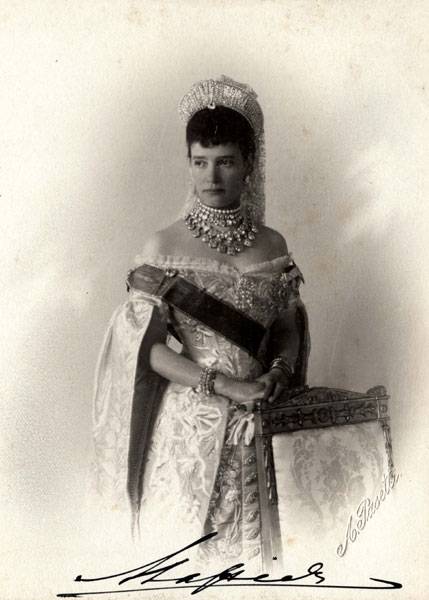
Her father was the Danish king Christian IX, her mother was Louise of Hesse-Kassel. The family had six children: the heir to the throne, Frederick, Alexandra, Wilhelm, Dagmar, Tyra and Waldemar. It was a friendly Danish family, in which it was the second daughter Dagmar, or officially Maria-Sophia-Frederica-Dagmar, who enjoyed special love. Her kindness, sincerity and delicacy won her universal love among numerous relatives throughout Europe. Dagmar knew how to please everyone without exception - not because she made any special efforts, but because of her innate charm. Not being a rare beauty, Princess Dagmar, nevertheless, stood out with a special charm that could not leave almost anyone indifferent.
Dagmar's sister, Alexandra of Denmark, became the future wife of the British King Edward VII, their son, George V, had a portrait resemblance to Nicholas II, the son of Dagmar and Emperor Alexander III. It is worth noting that Danish princesses were highly valued at the European “bride fair” for noble aristocratic families. Therefore, there is nothing surprising in the fact that the young Dagmar, who was famous for her wonderful character and charm, was also noticed in Russia. The Russian Emperor Alexander II and his wife Maria Alexandrovna (nee Princess of Hesse-Darmstadt) were just looking for a wife for their eldest son, heir to the throne Nikolai Alexandrovich.
In 1864, his father sent Nicholas to travel around Europe, in particular to visit Copenhagen, where he was advised to pay special attention to the young Dagmar, about whom the royal family heard a lot of good things. Marriage with a princess from Denmark was beneficial to Russia. So the empire wanted to strengthen its position on the Baltic Sea in defiance of Prussia and Germany. Also, this marriage would establish new family ties, including with Great Britain, relations with which were very strained for a long time. In addition, the invariable German brides in Russia are already tired, and the Dane (albeit from a German family by origin) would not irritate anyone either at court or among the people. Such a marriage was also beneficial for Denmark, a small Baltic state that would receive a strong ally.
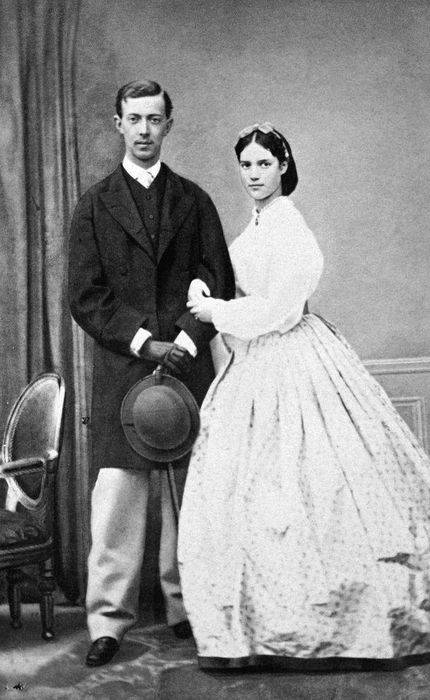
Nikolai Alexandrovich came to Copenhagen just to get acquainted, but immediately fell in love with the young princess. Big-eyed, short, petite, she did not shine with special beauty, but conquered with her liveliness, charm and charm. Already on September 16, 1864, Nicholas made an offer to Princess Dagmar, and she accepted it. She fell in love with the Russian heir, agreeing to change her faith to Orthodoxy for his sake - this was a necessary condition for marriage. However, during a trip to Italy, the Tsarevich unexpectedly fell ill for everyone. Beginning October 20, 1864, he was treated in Nice. In the spring of 1865, his health deteriorated significantly. On April 10, Emperor Alexander II arrived in Nice, his brother Alexander and Princess Dagmar were also there. On the night of April 12, 1865, after many hours of agony, the 22-year-old heir to the Russian throne died, the cause of his death was tuberculous meningitis. Grief Dagmar then struck everyone, at the age of 18 she became a widow, and without having time to get married, she even lost weight from grief and shed tears. The unexpected death of the heir also shocked the entire Russian Empire and the Romanov family.
At the same time, the Russian Emperor Alexander III did not forget about Dagmar, appreciating her devotion and strong character. Now the Russian imperial house wanted her to marry the new heir Alexander Alexandrovich, it is worth noting that the affection between them arose even when they looked after the dying Tsarevich Nicholas together in Nice. Already on June 17, 1866, their engagement took place in Copenhagen, and three months later, on September 1, 1866, the Danish princess arrived in Kronstadt, where she was met by the entire imperial family. In October 1866, Dagmar converted to Orthodoxy under the name of Maria Fedorova - she was given a patronymic in honor of the icon of the Fedorovsky Mother of God, who was the patroness of the Romanov dynasty. On October 28, 1866, the wedding of Grand Duke Alexander Alexandrovich and Grand Duchess Maria Feodorovna took place, the Anichkov Palace became the residence of the newlyweds.
Cheerful and life-loving in nature, Maria was warmly received by the capital and court society. Her marriage to Alexander, despite the fact that their relationship began under rather mournful circumstances (in addition, Alexander himself managed to defeat a strong cordial attachment to the maid of honor Maria Meshcherskaya before that), turned out to be extremely successful. For almost 30 years of marriage, the couple retained sincere affection for each other. The relationship between Alexander III and Maria Feodorovna was amazing for the Romanovs. Undoubted love and mutual tenderness throughout life is an incredible rarity in the royal family, where it was often considered the norm, having married for convenience, to have mistresses. Alexander II was no exception in this regard, but more on that later.
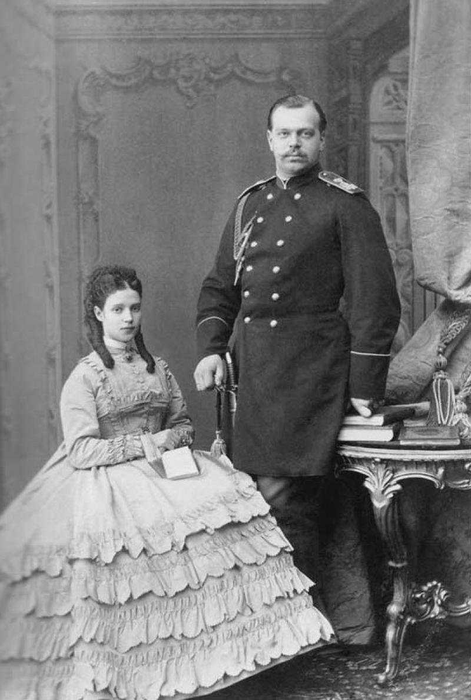
Everyone liked the charm of the young wife of the heir to the throne, having a truly magical effect on people. Despite her small stature, Maria Feodorovna was distinguished by such majestic manners that she could outshine everyone with her appearance. Extremely sociable, mobile, with a cheerful and lively character, she managed to restore to the Russian imperial house that brilliance that had been lost after the illness of Empress Maria Alexandrovna. At the same time, Maria Fedorovna loved painting and was fond of it, she even took lessons from the famous Russian artist A.P. Bogolyubov, she also loved horseback riding. And although the behavior of Maria Feodorovna gave many reasons to reproach the young princess for some frivolity and superficiality of her interests, she nevertheless enjoyed universal respect. There is nothing surprising in this, she possessed an integral and very strong character and, at the same time, an amazing sense of tact, which did not allow her to openly demonstrate her own influence on her husband.
The young princess had excellent relations with her mother-in-law and father-in-law. Alexander II treated her with undisguised sympathy, which somewhat smoothed out the cooling that grew from year to year in relations with his eldest son. The thing is that Tsarevich Alexander and his close circle by the beginning of the 1870s had become practically an opposition political circle. There was no talk of any criticism of the Tsar-Liberator and his activities, however, the undisguised attention to everything Russian, the opposition of aspirations and national feelings to the cosmopolitanism of the imperial court and the Russian aristocracy looked demonstratively. At the same time, the future emperor had a persistent dislike for Germany (especially for Prussia), in which he found the full support of his wife. To Prussia, which after the war of 1864 seized part of the lands from her native Denmark - Schleswig and Holstein (in fairness, inhabited mainly by Germans), Maria Fedorovna experienced a steady hostility. On the contrary, Emperor Alexander II adored his relative, the Prussian king and German emperor Wilhelm.
There was another problem that seriously complicated the relationship between father and son. For the last decade and a half before his death, Emperor Alexander II led a double life. His strongest passion for the young princess Ekaterina Dolgorukova became the reason that the emperor of the Russian Empire lived in two families, and after the death of his legal wife in 1880, after waiting for the minimum period of mourning, ignoring the opinion of his relatives, he married his longtime lover. This marriage was morganatic, which meant that the new wife and her descendants would not be able to claim the imperial throne. However, the already strained relations with the Tsarevich became even more aggravated. In addition, there were rumors in the capital that the emperor was going to crown "Katya". All this time, Maria Feodorovna remained on the side of her husband, sharing all his feelings, but also played the role of a “buffer”, trying, as far as she could, to soften and smooth out conflicts in the Romanov family.
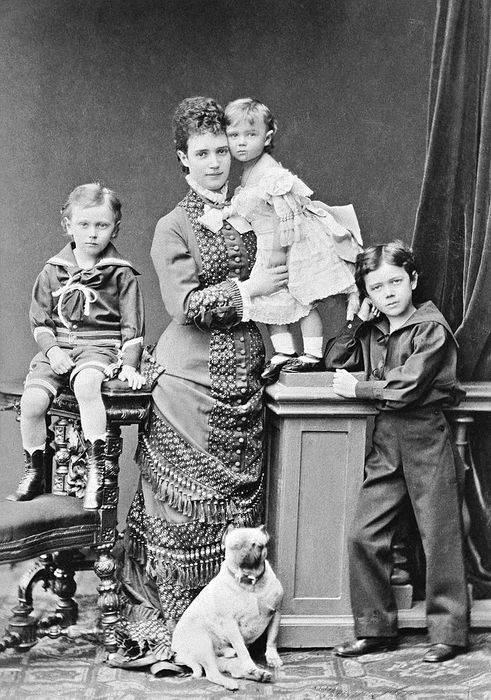
For 14 years of marriage, Alexander Alexandrovich and Maria Feodorovna had six children. In 1868, the first-born was born - Nikolai - the future last Russian emperor Nicholas II, whom everyone in the family called Nicky, a year later appeared - Alexander (died before he was a year old, in April 1870), in 1871 - George (died in 1899), in 1875 - daughter Xenia (died in 1960 in London), and three years later - Mikhail (killed in 1918). Their last child, daughter Olga, was born in 1882 (she died in 1960 in Toronto), when Alexander was already Emperor of Russia.
In March 1881, Emperor Alexander II died as a result of a terrorist attack. By coincidence, a successful attempt on the sovereign was made on the day when he was about to sign a draft of political reforms, called the “Loris-Melikov Constitution”. Even if this project outlined only the first timid steps towards the constitutional limitation of autocracy, it could become the beginning of the transformation of the whole country. But that did not happen. The new emperor ascended the throne, the eldest son of Alexander II, who became Alexander III, in the same year, Maria Feodorovna became the current empress, and after the death of her husband in 1894, the dowager empress.
Alexander III, unlike his father, pursued a policy of counter-reforms, all possible constitutional reforms were canceled. At the same time, during the years of the reign of Alexander III, Russia did not wage a single war, for which the monarch received the official title of Tsar-Peacemaker. His thirteen-year reign was calm and unhurried, like the autocrat himself. At the same time, the personal life of the emperor, as before, was permeated with happiness. It wasn't carefree, but it really was. Outwardly, almost nothing has changed in the life of Alexander and Mary. The emperor, as before, remained emphasized, some noted that before asceticism, he was modest in everyday life, and there was no pose in his behavior. Maria and Alexander often yearned for each other, so they tried to part as rarely as possible, and when this happened, they wrote letters to each other every day. These letters published later preserved a lot of touching evidence of their love, which was not lost during all the years of their life together.
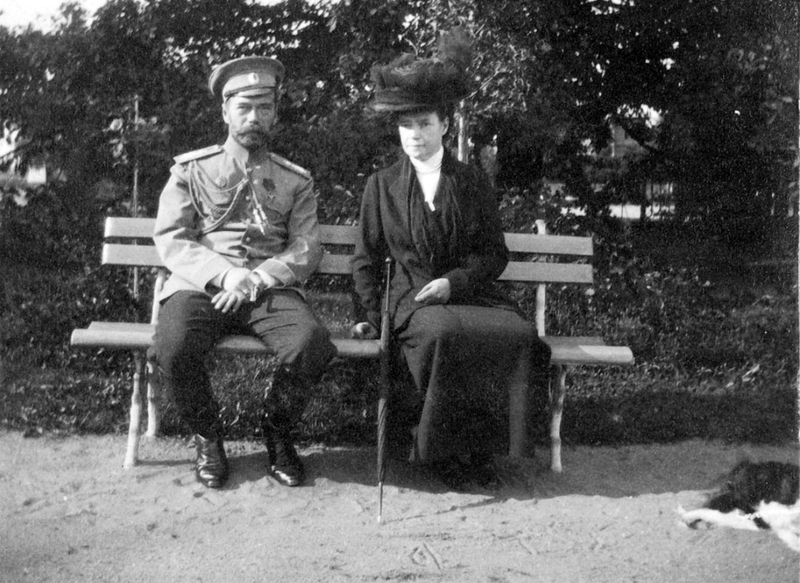
Contemporaries noted that a surprisingly friendly atmosphere always reigned in the royal family, there were no conflicts. They raised their children in love, but they did not indulge. Parents who valued organization and order tried to instill in their children a love for everything Russian, ideals, traditions, and faith in God. At the same time, the English system of education was adopted at the imperial court, which included obligatory oatmeal for breakfast for children, plenty of fresh air and cold baths for hardening. The spouses themselves not only kept their children in strictness, but they themselves lived quite modestly, disapproving of luxury. For example, it was noted that for breakfast the emperor and empress had only boiled eggs and rye bread.
Their happy marriage lasted until the death of Emperor Alexander III in 1894, he died at a fairly young age, before reaching the age of 50. The son of Alexander and Mary Nicholas II ascended the Russian throne. During the years of his reign, the Empress Dowager patronized Sergei Witte and his policies. Maria Fedorovna paid much attention to social activities. She patronized the Water Rescue Society, the Women's Patriotic Society, headed the Departments of Empress Maria's institutions (various educational institutions, educational institutions, shelters for disadvantaged and defenseless children, almshouses), and paid great attention to the Russian Red Cross Society (ROKK). Thanks to the initiatives of Maria Feodorovna, the budget of this organization received duties for issuing foreign passports, as well as railway fees from first-class passengers. During the First World War, she ensured that the “tax collection” - 10 kopecks from each telegram was also sent to the needs of society, which significantly increased the budget of the ROCK and the amount of assistance provided to them.
In June 1915, the Empress Dowager traveled to Kyiv for a month, and in August of the same year she begged her son Nicholas II not to take over the supreme command, but to no avail. In 1916, she finally moved from St. Petersburg to Kyiv, settling in the Mariinsky Palace. During the war years, she organized the work of hospitals, as well as numerous ambulance trains, in which hundreds of thousands of wounded Russian soldiers and officers improved their health. Here in Kyiv, on October 19, 1916, she celebrated the half-century anniversary of her direct participation in the affairs of the Department of Institutions of Empress Maria.
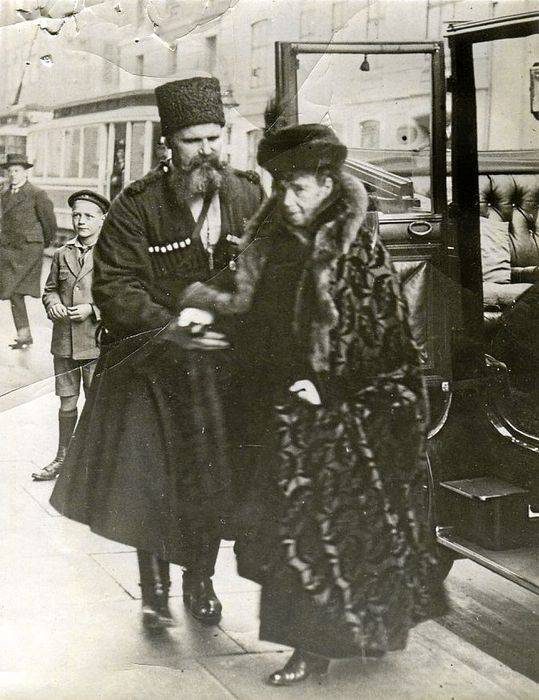
In Kyiv, Maria Fedorovna found out about the abdication of her son, after which she went to Mogilev to meet him. After that, with her youngest daughter Olga and the husband of her eldest daughter Xenia, Grand Duke Alexander Mikhailovich, she moved to the Crimea, from where she was evacuated in 1919 aboard the British battleship Marlboro. Already from the UK, she returned to her native Denmark, where she settled in the Villa Widøre, where she had previously lived with her sister Alexandra. In Denmark, she was accompanied by a Cossack camera Box Timofei Ksenofontovichwhich all this time served as her bodyguard. While in Denmark, Maria Feodorovna rejected all attempts of the Russian emigration to involve her in political activities.
Maria Fedorovna died on October 13, 1928 at the age of 81. After a funeral on October 19 at a local Orthodox church, her ashes were placed in a sarcophagus in the Royal Burial Vault of the Cathedral, located in the Danish city of Roskilde next to the ashes of her parents. Members of the Danish royal family are also buried here.
In 2004-2005, an agreement was reached between the Danish and Russian governments to transfer the remains of Empress Maria Feodorovna from Roskilde to St. Petersburg, where she bequeathed to be buried next to her husband. On September 26, on board the Danish ship Esbern Snare, the remains of Maria Feodorovna set off on her last journey to Russia. In Russian territorial waters, the Danes were met by the flagship of the Baltic fleet "Fearless", which escorted the Danish ship to the port. Upon the arrival of the ships at the port, the Russian warship Smolny met them with 31 gun salvos, exactly the same number of cannon salvos that were fired upon the arrival of the Danish princess in Kronstadt in 1866. On September 28, 2006, the coffin with the remains of Empress Maria Feodorovna was buried in St. Petersburg in the Cathedral of Saints Peter and Paul on the territory of the Peter and Paul Fortress next to the grave of her husband Alexander III.
Based on materials from open sources
Information